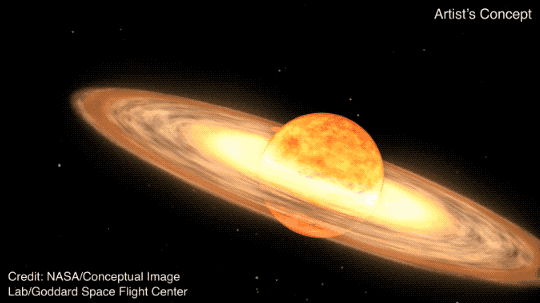T Corona Borealis
Azimuth 2024-03-28
Sometime this year, the star T Corona Borealis will go nova and become much brighter! At least that’s what a lot of astronomers think. So examine the sky between Arcturus and Vega now—and look again if you hear this event has happened. Normally this star is magnitude 10, too dim to see. When it goes nova is should reach magnitude 2 for a week—as bright as the North Star. So you will see a new star, which is the original meaning of ‘nova’.
But why do they think T Corona Borealis will go nova this year? How could they possibly know that?
It’s done this before. It’s a binary star with a white dwarf orbiting a red giant. The red giant is spewing out gas. The much denser white dwarf collects some of this gas on its surface until there’s enough fuel to cause a runaway thermonuclear reaction—a nova!
We’ve seen it happen twice. T Corona Borealis went nova on May 12, 1866 and again on February 9, 1946. What’s happening now is a lot like what happened in 1946.
In February 2015, there was a sustained brightening of T Corona Borealis: it went from magnitude 10.5 to about 9.2. The same thing happened eight years before it went nova the last time.
In June 2018, the star dimmed slightly but still remained at an unusually high level of activity. Then in April 2023 it dimmed to magnitude 12.3. The same thing happened one year before it went nova the last time.
If this pattern continues, T Corona Borealis should erupt sometime between now and September 2024. I’m not completely confident that it will follow the same pattern! But we can just wait and see.
This is one of only 5 known repeating novas in the Milky Way, so we’re lucky to have this chance.
Here’s how it might work:

The description at NASA’s blog:
A red giant star and white dwarf orbit each other in this animation of a nova. The red giant is a large sphere in shades of red, orange, and white, with the side facing the white dwarf the lightest shades. The white dwarf is hidden in a bright glow of white and yellows, which represent an accretion disk around the star. A stream of material, shown as a diffuse cloud of red, flows from the red giant to the white dwarf. The animation opens with the red giant on the right side of the screen, co-orbiting the white dwarf. When the red giant moves behind the white dwarf, a nova explosion on the white dwarf ignites, filling the screen with white light. After the light fades, a ball of ejected nova material is shown in pale orange. A small white spot remains after the fog of material clears, indicating that the white dwarf has survived the explosion.
For more details, try this:
• B. E. Schaefer, B. Kloppenborg, E. O. Waagen and the AAVSO observers, Announcing T CrB pre-eruption dip, AAVSO News and Announcements.
